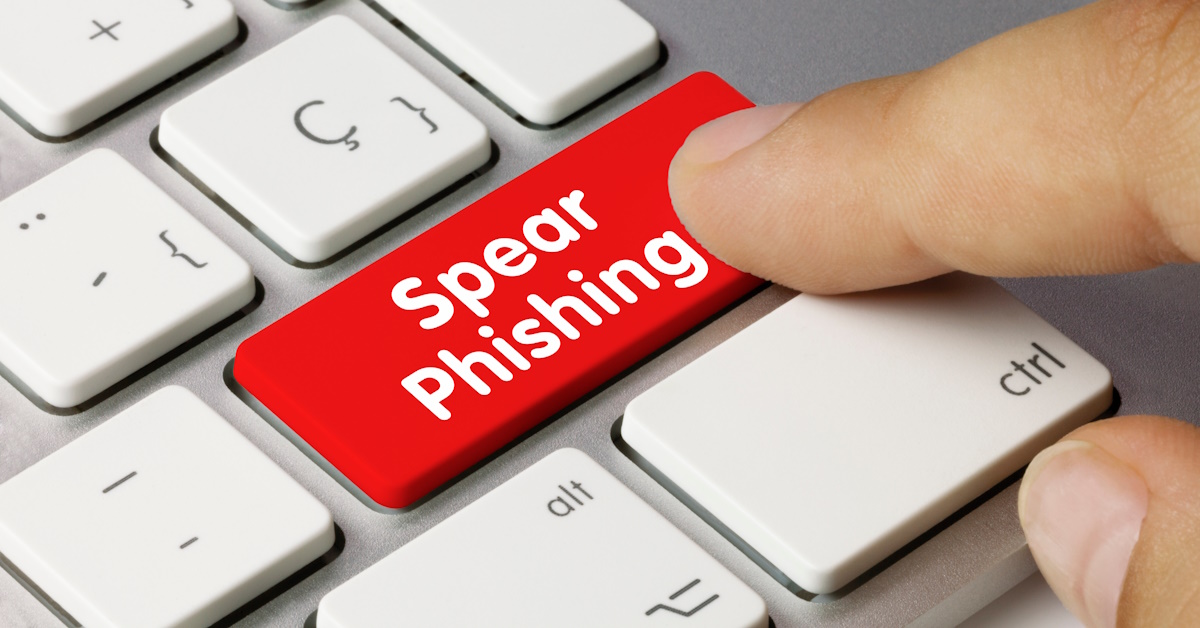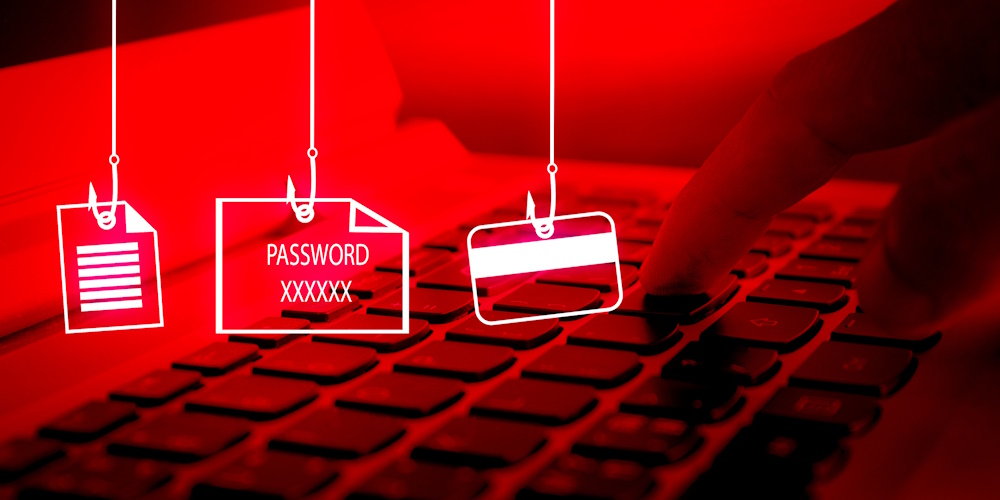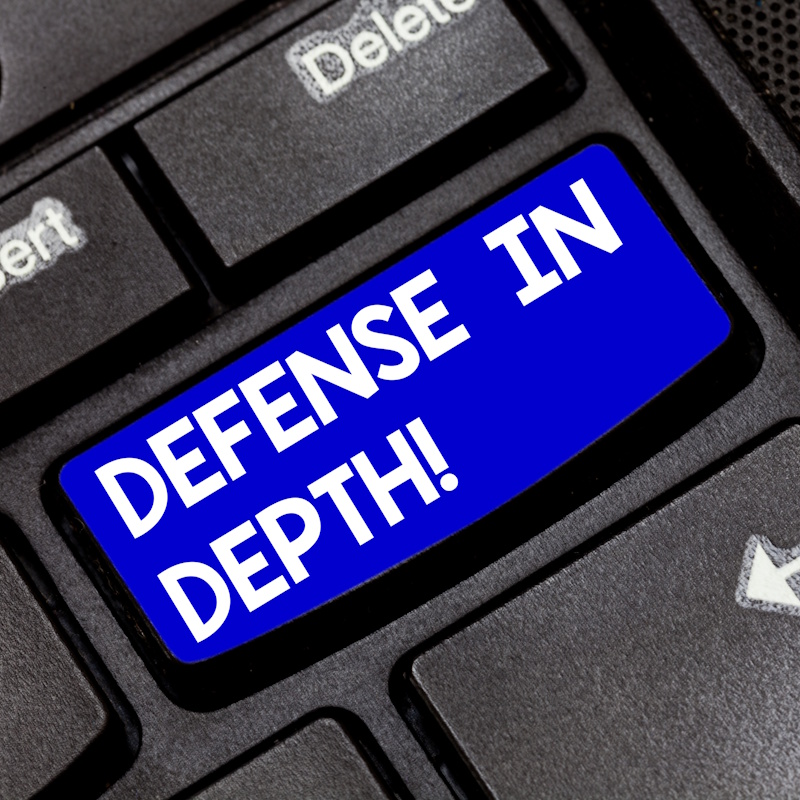Recent Posts
Categories
Stay Informed

We live and operate in a digital age. Most businesses can’t do business without email or the internet. We store our data online, bank online, advertise online, and socialize online! There are always new tricks and bad actors on the scene to try to steal information, take over systems, and even cause harm to businesses, including spear phishing.
It is good to understand what Spear Phishing is and how to protect your business. Below, we will discuss what spear phishing is, how it works, the risks, and how to protect your business.
What is Spear Phishing?
In cyber security, spear phishing is a targeted approach where an individual or group are specifically targeted to be tricked into giving out confidential information, downloading malware, or clicking on a malicious link. Spear phishing derives its name from the fishing technique where a specific fish is targeted with a spear.
Whereas phishing is more like throwing a net in the water to catch as many fish as possible, spear phishing is more sophisticated and directly targeted. Spear phishing requires more research and effort on the attacker’s part, but has also been proven to be more successful.
Attackers invest time and effort to research their targets, gathering detailed information such as job roles, personal interests, and relationships. All this information is used to create very convincing messages. As technology continues to grow, more techniques are available, and it is becoming harder to identify the bad actors.

How Spear Phishing Works
Spear phishing attacks can occur for many reasons. For example, it could be a malicious organization intending to rob businesses, or an organization hired on the dark web to cause a competitor harm. Regardless, it’s important to know how spear phishing works in order to protect your business from these cyber attacks.
Define the Target
First, the cybercriminals choose a target. This is usually a person with a high level of access, such as a C-Level person, Accounting Manager, HR Manger, or IT Lead. These will be individuals that have valuable information and/or access that can be used to steal money, steal data worth money, or be able to cause damage to the company.
Research the Target
Once a target is selected, the research begins. The attackers collect information from social media accounts, company websites, the dark web, earlier breaches, and more. They learn as much as possible about the target’s likes, dislikes, habits, roles, responsibilities, and relationships.
In some cases, a seemingly unrelated compromise may occur to gain information or insights into the real target. For instance, a family member’s social media account could be unknowingly compromised and used to communicate with the target. Or, a colleague’s email could be compromised to see the target’s communication history.
Spear phishing attackers may use tools to speed up the process or be very patient to learn details that will make their attack more successful.
Perfect the Message for the Target
This newfound information is used to create the perfect message. They make it so believable to their target that most people wouldn’t even question it. In fact, the message may even come from a trusted source, like a boss, colleague, friend, or family created in a way you would expect them to communicate with you.
Send the Message to the Target
Once that perfect message is created, it is then sent on to the target, often containing a malicious link, attachment, or request for confidential information or money. Note, the first communication may not always include the link, file, or request. It can depend on the attacker’s intent and approach.
After the message is sent and the bait is taken, the hacker begins their work. This may be stealing money, accessing information, or taking over a network. This is all done with one click. The target may not even know it’s happening. With the advancements in Artificial Intelligence and Machine Learning, programs can be written to adjust to an environment and go undetected.

Examples of Spear Phishing Attacks
Now that you know what it is and how it is done, let’s discuss some popular examples of spear phishing attacks.
CEO Fraud
CEO impersonation is very common, because most people don’t question their boss, and may bypass processes for them. Common scenario: An email seemingly from the CEO or another high-ranking executive is sent to an employee in the finance department, urgently requesting a funds transfer for a supposed business deal. Or an email is sent that they want to give the staff gift cards, so go buy 20 of them, and send them the codes.
Invoice Scam
With an invoice scam, a realistic email is sent that appears to be from a known supplier. It contains an invoice that either carries malware or directs the recipient to a phishing site. It may be an exact replica of a previous invoice. Even more common, a legit supplier sends you an email asking you to update your ACH routing to their new bank. You unknowingly do this and pay the wrong company.
Credential Harvesting
Credential harvesting has been a very successful scam. In this attack, an email posing as a message from the company’s IT department asks employees to update their passwords via a provided link that leads to a fake login page. The page looks the same. You put in your old password and a new one. In this case, it doesn’t matter how good your password is, if you unintentionally give it out.
The examples are never-ending and continue to get better and more sophisticated.

The Risks of Spear Phishing
The consequences of a successful spear phishing attack can range from annoying to crippling for businesses. Most of these attackers are from foreign countries and we have no legal rights or ability to take any action. In fact, it may be completely legal in their country, especially when targeted at the United States.
The most common risks of a spear phishing attack include:
- Financial Loss: Direct monetary losses from fraudulent transactions or ransom payments. The direct cost to respond or correct a breach can also result in financial loss.
- Data Breach: Unauthorized access to sensitive company data, potentially leading to regulatory penalties and loss of customer trust.
- Reputation Damage: Erosion of customer and stakeholder confidence in the company’s ability to protect their information is a growing problem.
- Loss of Productivity: Malware infections can cripple business operations, resulting in significant downtime and productivity loss. It cannot just affect your business, but any supply chain the business plays a vital role in.

Protecting Your Business from Spear Phishing
When it comes to cyber security, it is not a matter of of, but when you fall victim. To protect your business from spear phishing, you must create layers of protection to defend yourself. But that is not enough. You must also be prepared on how to handle a breach and minimize the exposure.
Some security layers you can add include:
Employee Awareness Training
If you don’t teach your employees what to look for, they are more likely to be fooled. Regularly educate them about what is out there, what to look for, and what protocols to follow. If you don’t have protocols in place to check and double check before changing bank accounts, or giving out confidential information, consider adding those policies and training on that as well.
Email Security
There are many different advanced email security programs to help weed out phishing emails to prevent them from coming to your inbox. Take advantage of them. Even Microsoft 365 has added layers that need to be activated for more protection.
Two-Factor Authentication (2FA)
People guess passwords all the time. They are just not enough anymore. Having a secondary verification can help minimize others gaining access to your accounts. Plus, when your MFA app is going off and it is not you, you know someone has your password.
Regular Updates
Ensure all software and systems are kept up-to-date to protect against known vulnerabilities. It’s too easy to exploit known vulnerabilities, so don’t put your business at risk.
Incident Response Plan
Develop and maintain a comprehensive incident response plan to quickly address and mitigate the effects of a spear phishing attack. Someone will fall victim, be prepared.
Understanding spear phishing is not just about knowing its definition; it’s about recognizing the tactics used by cybercriminals and taking proactive steps to defend against these threats. Stay informed, stay vigilant, and stay secure.
For help strengthening your cyber security defenses, view ISOCNET’s cyber security services or contact us for a free consultation today.



